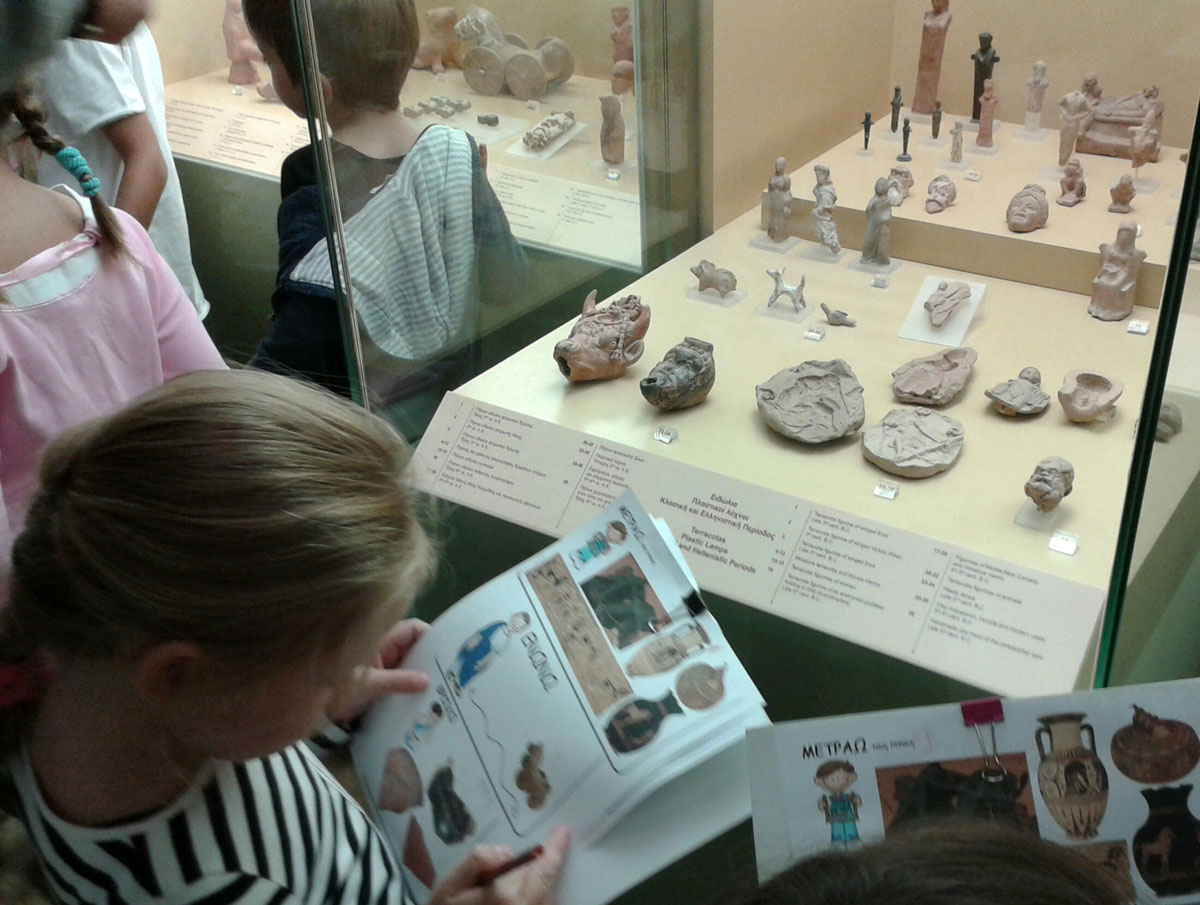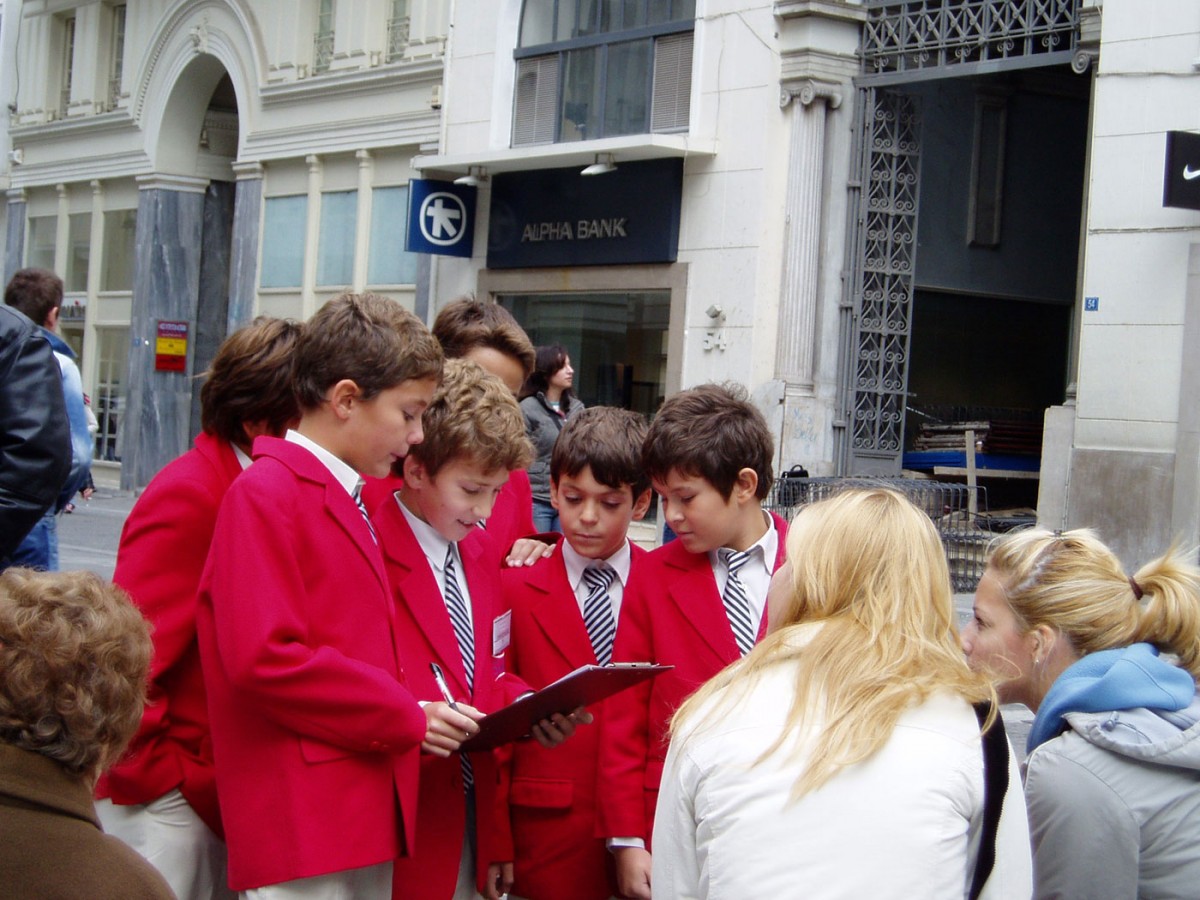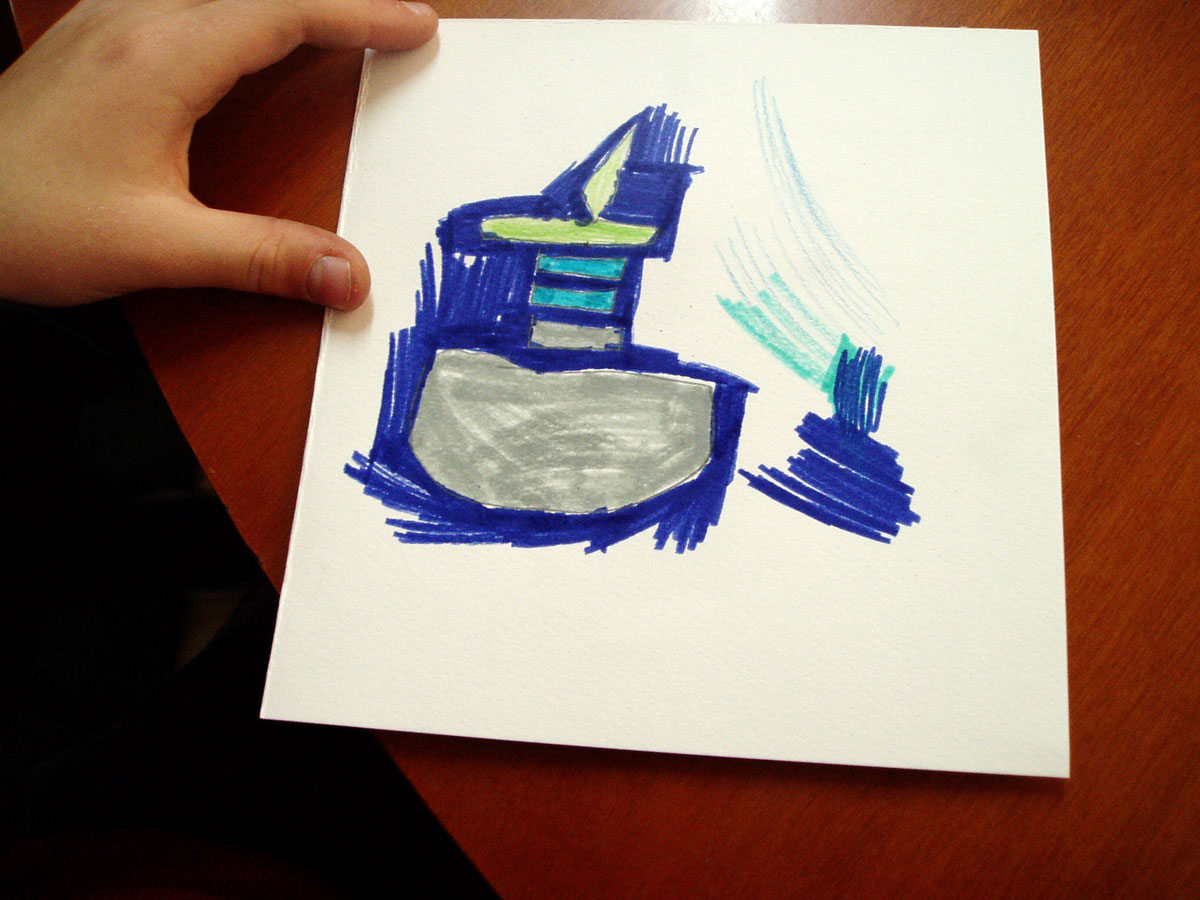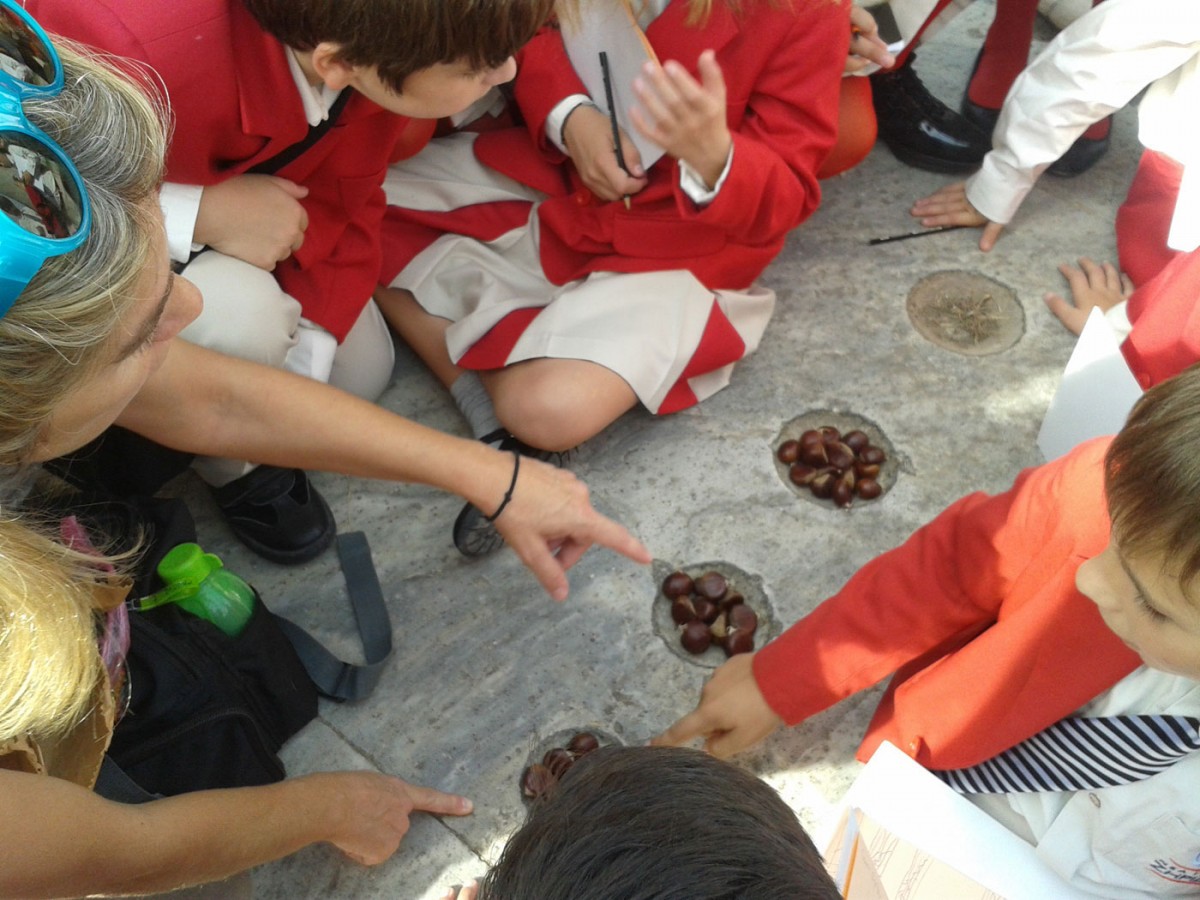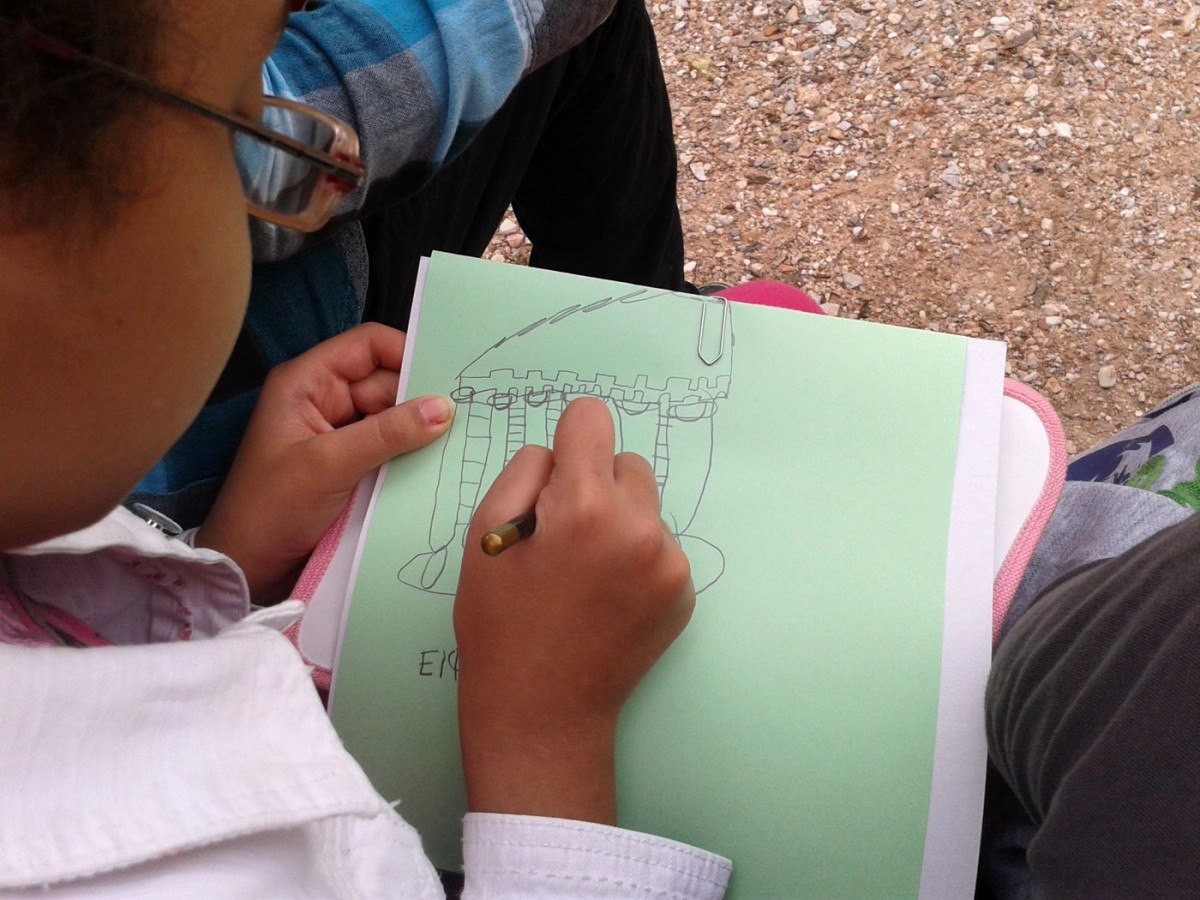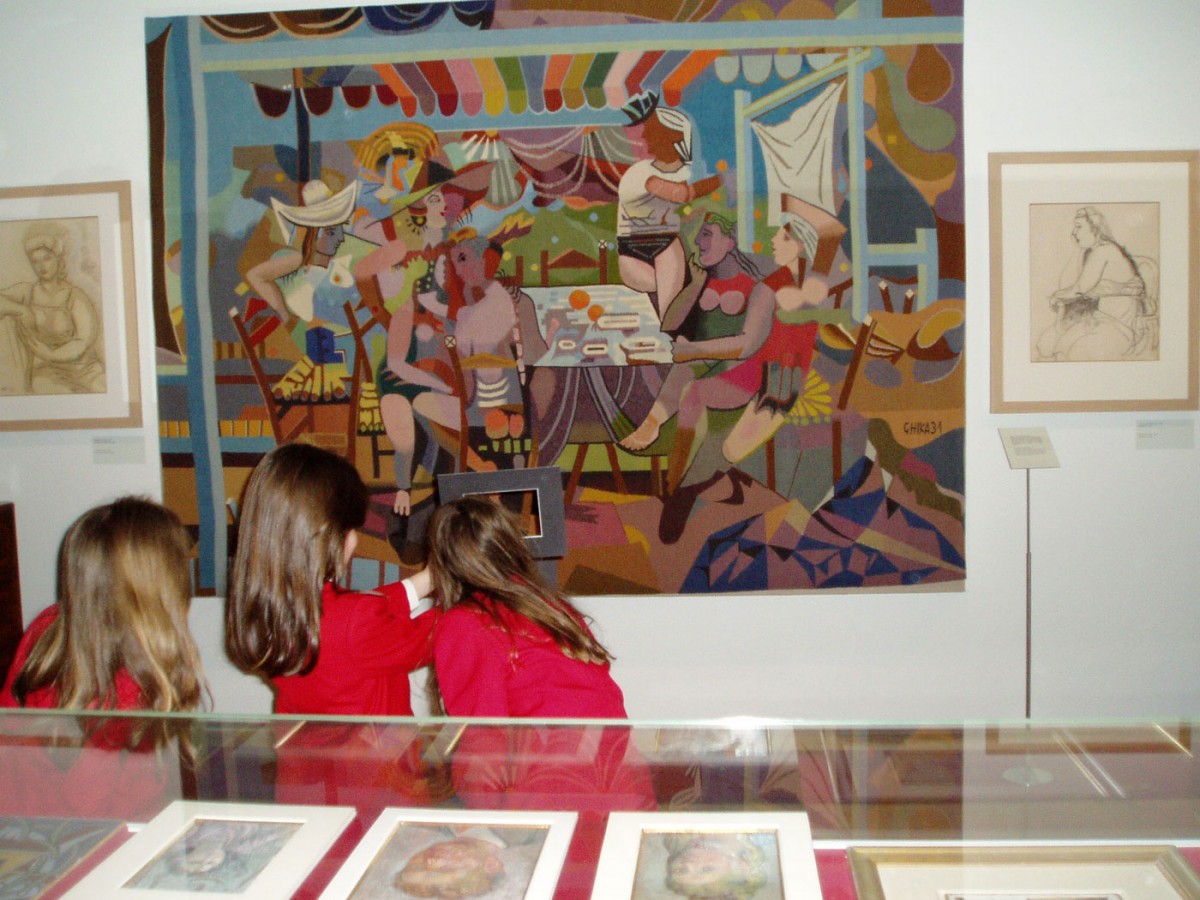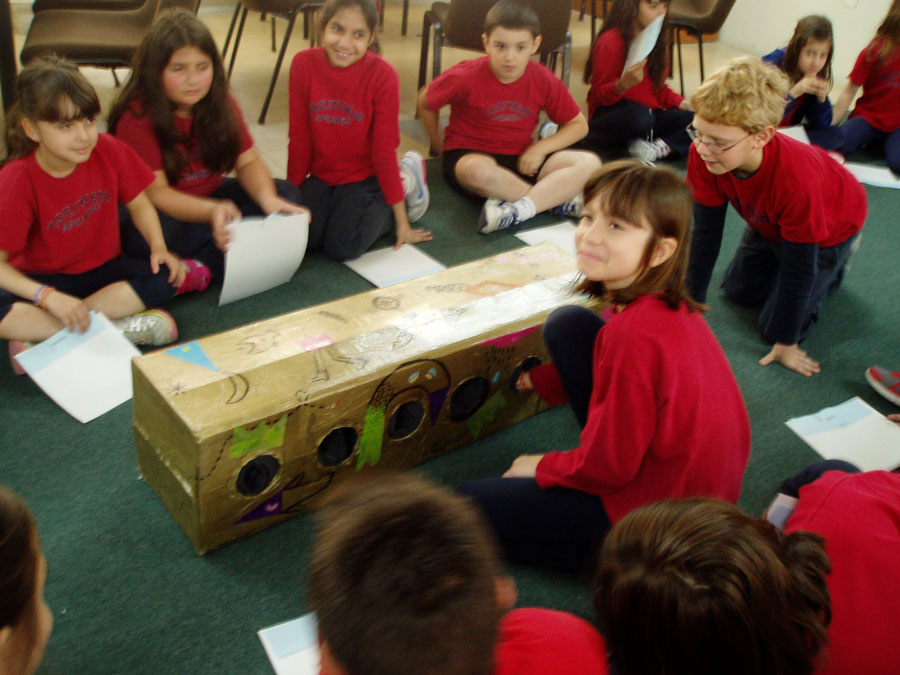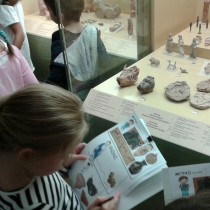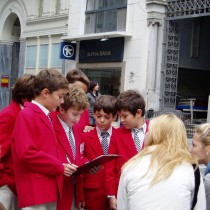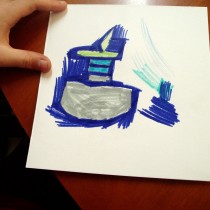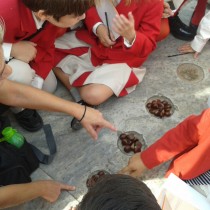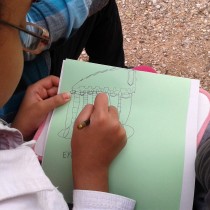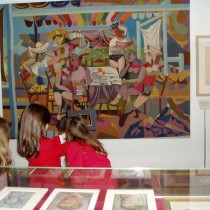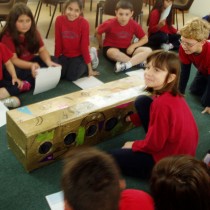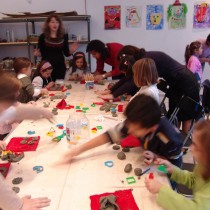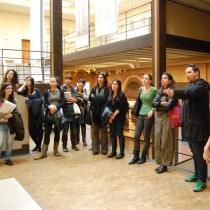The article attempts a critical survey of educational programmes, carried out in museums for groups of primary school pupils, by analyzing the parameters that shape them and commenting on programmes drawn up over the last fifteen years, either by museum staff or by the writer during her collaboration with primary schools.
A brief history of a great achievement
Educational programmes in Greek museums have a thirty five year old history. They start at the Benaki Museum in 1978, shortly followed by the Peloponnesian Folklore Foundation and the Museum of Greek Folk Art, introducing the functioning of our country’s museums as institutions for the education of the young.
The first programmes for school groups begin in 1986 at the Numismatic Museum in Athens, while in 1987 the Cycladic Art Museum inaugurates its Education Department. Some initiatives contributed considerably in promoting a dialogue with museum education (Χατζηνικολάου 2002, p. 134) like those taken by the Greek section of the ICOM with regional seminars called “Museum-School” beginning in 1990, as well as museum related programmes, such as Environment Education, the “Melina” Programme, A School adopts a Monument, developed by the Ministry of Education and the Ministry of Culture. Today’s primary school scene where museums are part of school life, was gradually shaped by the following events: the uninterrupted offer of educational programmes for school groups by, initially, a few museums (note 1) and Ephorates of Antiquities (note 2), along with the creation of museums especially designed for children (note 3), the training of teachers in museum education (note 4) and the teaching of modules in Museum Education at university (Μούλιου Μ. and Τ. Χατζηνικολάου 2003). This is a considerable achievement for museums and the student community’s great gain.
The encounter between two worlds
Museum programmes addressed to school groups at all levels (those of primary school education being the largest) constituted, for years, the body of their educational activity, since these groups made up and still do, the majority of visitors during the school year (note 5).
Primary school teachers warmly greeted this educational and recreational “tool” called an “educational programme in a museum” (or an educational visit), even though it was limited at the start. As of the year 2000, men and women teachers have warmly embraced museums’ educational activities, instigated both by the Ministry of Culture (note 6) and mainly by university teachers who, through contemporary educational theories, encourage museum visits and their being included in the subjects of primary school (note 7).
Participation in educational programmes and the organizing of educational visits were, however and still are often lacking in judgement and with no specific aim, despite the Ministry’s recommendations to the opposite (note 8). This is caused both by Heads of schools having no training in overseeing the programming of the visit, depending on the level and by teachers of each class effectively utilizing and including the educational visit in their schedule. In this way, although the two worlds did meet with enthusiasm, there was no coordination and no joint programme between schools and museums, in other words between their respective Ministries of Education and Culture (Δάλκος 2002, p. 164).
The explosion in the demands of primary schools to participate in educational programmes and visits offered by museums (note 9), had positive and negative consequences. The following can be counted as positive:
– The enhancement of the museums’ educational role and subsequently the long overdue founding, compared with other countries, of previously nonexistent educational departments in this country’s important museums (note 10).
– The expansion and evolution of existing departments, in terms of staff, building infrastructure and equipment.
The following can be seen as negative effects:
– The qualitative features of the museum-school relationship were eclipsed by the quantitative ones. The emphasis was placed on the development of more programmes and the reception of a steadily increasing number of pupils, without properly discussing the need for targets that served the programmes (cognitive for the most part), the method/methods they used and the type of experience they offered pupils. It seems that in this case, educational theory, which determines a museum’s educational policy (Hein 1998, p. 16), followed practice.
– The presence of unsuitably trained animators. (These were often either willing volunteers but with a different level of training and qualifications, or individuals with a theoretical approach to museum collections, with no familiarity with the pupils’ ages and limited or no teaching experience).
– The overcrowding of the museum halls (which continues to be a big problem, combined with the lack of museography studies that take children into account).
Today, the problem of overcrowding and the overall flow of visitors has been settled, thanks to the following initiatives taken by museum staff:
The programmes are structured according to the age groups they are addressing, so as to avoid a barrage of pupils visiting, but also to be able to cope with each age’s learning needs. The appropriate number of pupils participating in each programme is strictly complied with (note 11).
The teachers are adequately informed on all the visit’s practical issues, by texts either sent to them or posted on the internet (note 12). The great demand (combined with discussion on the need to adapt the programmes to each group’s particular features) has been tackled by organizing tours and seminars for teachers, enabling them to carry out educational guided tours independently (note 13).
On the part of the teachers, initiatives are only undertaken at a personal level. By now, there is a large group of them who are close to museums and who are informed, see to their visits’ timely programming and develop ways of making them useful to the class. All these things, however, depend entirely on the teachers’ own willingness. Conversely, in the capital today, there are pupils that graduate from primary school without ever having visited any of the museums (note 14). It is worth noting that even in countries with a greater tradition in museum education, there is a great percentage of teachers who do not visit museums (note 15). Causes may be sought in personal, negative experiences of the teachers in their own school years, a distrust in the visit’s use, inadequate training in the way they can use museums (Δάλκος 2002, p. 164), the museums’ weakness in responding to the expectations of teachers and their pupils. An additional cause to all the above is the latest economic crisis which has considerably limited pupils’ transport in our country (due to the high cost of tourist coaches), as well as the inability of their families to pay even a small sum that has sometimes been imposed, out of necessity, due to cuts in state and private funding (note 16).
In search of the recipe for success
Educational programmes carried out in a museum have, to a great degree, overcome the “childhood illnesses” of didacticism, traditional passive methods of teaching, the one dimensional interpretation of collections, the academic pedantry of information and the presence of a spineless form of animation, so distanced from childhood. The best versions of educational programmes have developed into hours of condensed experience that include moments of recreation, activating imagination, acquiring fresh knowledge, exploring and experimenting, creativity and collaboration. Which, however, is the recipe for success?
In theory, a programme is successful when:
-Its basic target has been achieved, which, in all primary school programmes, should be the development of a positive attitude towards museums and the perception of a visit as a pleasant and recreational experience (Pitman-Gelles 1981, p. 47),
-Individual targets, set during its design, have been achieved. Namely, aesthetic enjoyment, observation, knowledge, development of skills, social inclusion et al. (note 17),
-The programmes’ targets have met with the expectations of both teachers and children.
-Children’s response to animation is enthusiastic.
If we add up all the above, the venture seems rather unlikely to succeed. All the same, we encounter children, teachers and animators, smiling at the conclusion of a programme, each of them feeling satisfied on his/her part. Let us then look more analytically at how the above can be achieved.
It takes two to tango
a. The teacher
It is well known from international bibliography (Hooper-Greenhill 1994, p. 120) that every educational programme is structured in three parts:
Α. In class preparation
Β. The visit
C. Activities after the visit
From this structure alone, it is obvious that there can be no successful programme without the teachers’ collaboration and contribution. While, however, this has been known for years, the teachers’ involvement in this process remains limited. Museums have designed preparatory material that is sent to the school (note 18), or can be purchased by the teacher via the internet as well as work sheets that can be completed after the visit or ideas for creative activities (note 19), though their use cannot be guaranteed in class.
Α. In class preparation
Cognitive targets will be achieved – insofar that learning will be possible within the educational programme (note 20) – only if all three of the programme’s stages are realized. Here are some ideas that work during the preparation stage: in class discussion, searching for topic related information, the carrying out of small projects that stress some of the topic’s aspects, visiting the museum’s website, hinting at something strange or of special interest to the children in the museum, the division into groups and the handing out of roles, borrowing a museum kit. When they have prepared in class, children’s degree of involvement varies considerably, both in terms of the interest they express and the wealth of experience gained.
Β. The visit
When teachers attend the programme (which they don’t always), they function in different ways. Some are in the mood to participate in bridging the experience of their class with the programme’s content and this is very constructive. Other times, feeling anxious in case they seem inadequately trained to the animator, teachers intervene to prompt their pupils. Sometimes, they interrupt the programme to make remarks and other times they are indifferent.
C. Activities after the visit
Digesting and incorporating knowledge, utilizing stimuli through creative expression is achieved through visual activities, constructions, completing handouts, organizing photography exhibitions, representation through role playing, creative writing in a little newspaper or posting on an electronic page, after the visit and over time.
b. The animator (interpreter)
Regarding the four targets previously set for the programme’s success, we expect the following from its design and animation (note 21):
1. A positive attitude
For it to be a positive experience, the programme must, above all, be designed to make children feel that it is of relevance to them. Whether it has more or less of a recreational character, children must understand what is happening and for what reason, how they can easily join in, getting joy and satisfaction from it. Linking the topic to their personal experiences is, therefore, what comes first. Their interest in the programme’s topic is not self evident, since they have not chosen it any way. Bridging the distance separating the children from a collection’s subject matter is entirely the adults’ responsibility,
2. Learning (aesthetic enjoyment, knowledge, skills, values, creativity, critical thinking)
a. The method
Theoretically, it is a common place to believe that museum collections constitute an environment that offers itself to active learning and the implementing of contemporary education theories. Play, in its infinite forms, may become the suitable expression of the above theories and the means for primary school children to get to know a collection. Before any kind of activity, however, it is imperative to solve all practical problems such as hunger, thirst, hanging up of jackets, seating arrangements etc, and to have clarified details for the carrying out of the programme (we will need to get up and sit down again, we will divide ourselves up into groups et al).
b. Content
Content elements that contribute to the programme’s success are:
-alternating activities,
-coherence and relevance of all activities within one framework,
-physical movement throughout the programme,
-the use of simple tools (ruler, magnifying glass, picture frame),
-use of appliances brought by the children (photographs taken from particular angles, recordings),
-storytelling,
-role playing,
-use of leaflets for taking notes, drawing or filling in, as of the 3rd grade (Χαλικιά 2002),
-circulating in the halls with a degree of autonomy,
-humour,
-surprise,
-collaborating with constructions or interactive exhibits,
-developing a personal relationship between animator and children, with the former referring to his/her own personal experiences (note 22),
The above are ingredients for the success of an educational activity that has science as a starting point but in due course blends with art.
3. Expectations of teachers and children
Usually, the programmes realized by museum people have a strictly predetermined structure from which they do not deviate. Because, however, this structure has been decided without the participation of either teacher or, even less, of children, some flexibility is needed at times for everyone’s expectations to be met. For example, in a hypothetical programme on the Parthenon Frieze at the Acropolis Museum, the children want to see the scaled Lego model or the teacher considers it imperative that they see the Caryatides. For this reason, many museums abroad explore the possibility of also collaborating with schools on setting objectives (Hoοper-Greenhill E. et al., 2004 p. 34).
4. Enthusiasm
Having learnt in school to respond to obligations, not always either pleasant or interesting, children may also behave the same way in a museum. An enthusiastic response, however, indicates that emotion is involved and this contributes considerably to the acquiring of knowledge and the deepening of experience (Goleman 2011 and Hein 1998). Of course, an enthusiastic response presupposes enthusiastic animation.
The riddle of assessment
The ways in which we can assess an educational programme are the following:
Children’s attitude towards a museum after visiting it, is assessed by the way they refer to it, but also by the way they look forward to the next visit. The teacher’s attitude contributes considerably in achieving this objective, by creating a feeling of euphoria while in anticipation of the next visit, referring frequently to the preceding one and showing an interest in the children’s other museum visits such as those with their family.
Individual learning objectives differ considerably both from programme to programme and in each of the three primary school age groups, namely 1st/2nd grade,3rd/4th, 5th/6th. Of these, cognitive objectives are the easiest to assess. They constitute, however, a sensitive point in the relations between schools and museums, because both institutions must collaborate to achieve them. Ideally, the programme’s objectives should be notified to the teacher through the preparatory material and next, he/she will prepare the pupils. This does not always happen. The usual misunderstanding about the educational visit is that it is seen as a school trip and a time for relaxing .Some teachers are diametrically opposed to this and wish to “make the most” of the visit, go round many halls, take part in more than one programme, exhausting the pupils in this way.
A perfectly designed programme that is animated in a mediocre way will not achieve its objectives, because relations with the mediator (animator) are of paramount importance to young children, for them to respond. On the other hand, a gifted animator, familiar with these age groups, can make the most basic educational guided tour take off, thanks to his/her gifts in communication.
It is really difficult to discern the imprint a programme has left on children, to assess it and measure the extent of its success i.e. what a good time we had, how much we learned, how pleased we feel with ourselves and others, how much it has changed us. Usually, the assessment is done by questionnaires sent to teachers and sometimes to children, where an attempt is made at an in depth look at the participants’ experience, for conclusions to be reached. Since many factors can influence answers (note 23), one could argue, in my opinion, on the safety of conclusions drawn from children’s responses such as “I enjoyed today’s visit” or “I could understand most of what I saw and did today” (Hooper-Greenhill E. et al., 2004, p. 15).
It is of great interest to the assessment to record the spontaneous reactions of pupils and teachers during a programme or immediately after its end. Here are some indicative reactions from the children:
– Visual contact with the animator and the exhibits, participation in the activities.
– Discussing the programme among themselves or also with their teacher (male or female).
– Questions.
– Exclamations of surprise.
– Smiles.
The group is interested in the programme, when the former is not divided, there is no need of recommendations concerning its behaviour, it does not ask the time!
Young children, being spontaneous, demonstrate their emotions in a direct way to the animator and teacher by hugging them and verbally expressing the wish to “come back to the museum”.
The people behind the programmes
Who should design and interpret a programme or an educational guided tour? What type of knowledge and skills should he/she have? There is a difference in the profiles of people on the staff of educational departments in museums of other countries, although in most cases they have some teaching experience or knowledge regarding education. The difference is also obvious from the qualifications they hold (Herz 2014a). In our country, theoreticians of museum collections, archaeologists, art historians, scholars of folklore et al. are usually responsible for the design and animation of educational programmes, this being more rare in the case of museologists and museum educators (note 24). This is mainly due to the large percentage of archaeological museums and their staff of archaeologists and historians. To date, the state has not made sufficient use of the existing potential in museologists and museum educators, many of whom are graduates of respective departments at state universities. This has repercussions in the design of programmes, with the approach being often academic, cut off from the children’s everyday life, while the animation is frequently conservative and spineless, despite trying to use up to date means and methods.
It is possible for animators to come from different scientific areas, provided they wish and are able to develop and combine all those things previously referred to.
Teachers who know their group well and are familiar with the ways to address it successfully, could animate a programme with clear cognitive limits. Nevertheless, we often see them being reluctant to take on the design and animation of a guided tour or programme. This is attributed to their being burdened with organizing the visit, the responsibility for the children’s safety and conduct, so they avoid any extra anxiety, in case they are not sufficiently trained and are asked something they may not know the answer to.
A closer collaboration between museums and schools is required for the future of educational programmes in school groups. In the case of museums, it is a matter of vital importance to them, since successful programmes that cultivate pupils’ positive attitude towards them (note 25), contribute considerably to their future in terms of visitors (Anderson, D., Storkdiek, M. and Spock, M. 2007, p. 202), necessary for them to be viable.
Today’s Challenge
If today, in time of economic crisis, we were to question from the start what a programme or a two hour visit to a museum can offer children, the answer comes from the head of a big institution, the Tate in Great Britain: “Inspire. Offer a really extraordinary experience that students have an emotional reaction to. Teach them how to learn for themselves. What can you do within an hour that invites children to see what questions they need to ask?” (Herz 2014b).
With the evolution of Museology, however, and the designing of more and more exhibitions that take museum education into account, some ask if exhibits will need to be interpreted in future, or if they will make sense to children of their own accord. Will digital applications, sophisticated interactive exhibits, take over the role of the interpreter? Can we imagine 4th grade pupils freely touring the halls of a child friendly museum, making their own choices about exhibits they wish to see, moving at their own pace, discussing with their friends on what impresses them and searching for answers to their questions?
Possibly, this may also happen, but I believe it will not substitute the joy of participating in a mediated interpretation. In the eyes of children, the museum and its collection acquire a face, voice, point of view and inspire emotions with the presence of the animator. The value of a charming narrative is timeless, even when autonomous activities intervene. In the end, everybody wants someone to tell them a story!
Alceste Chalikia
Teacher, Museologist, M.A, Writer
